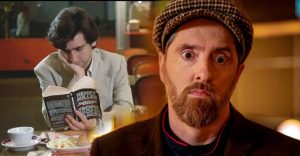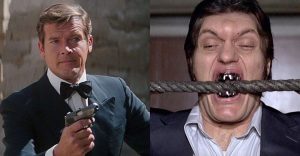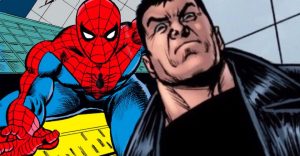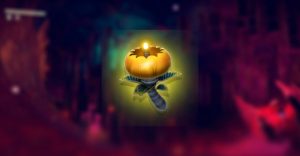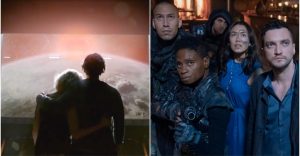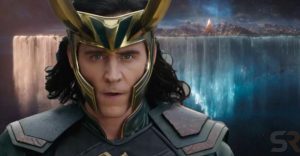Who Is Dr Strange’s New Mentor: O-Bengh Comics Origin & Powers Explained

Warning: Contains SPOILERS for Marvel’s What If…? episode 4.
Episode 4 of Marvel’s What If…? introduced audiences to a new mentor for Doctor Strange in the form of soft-spoken librarian O-Bengh. Although the character seems a benign influence throughout the episode, there is much more to O-Bengh’s origin story than meets the eye. In fact, a look back through the comic book source material reveals that not only is O-Bengh a being of impressive power himself, but that he hasn’t always been a positive influence in the Marvel universe.
In What If…?, Sorceror Supreme Doctor Strange encounters O-Bengh as part of his quest to bring back his dead love-interest Christine Palmer. Initially silent, O-Bengh answers Strange’s requests for the books of sorcerer Cagliostro in extremely cryptic terms. Eventually, he leads Strange to an impressive library containing the so-called lost books of Cagliostro, which in turn allows Strange to gain the knowledge and the power necessary to reverse the absolute point in time around Christine Palmer’s death. Unfortunately for Strange and the fate of this particular reality, reversing this point only leads to the complete destruction of the universe – despite O-Beng’s warnings to Strange on his deathbed.
Throughout What If…? episode 4, O-Bengh is very much a background presence, showing Strange the knowledge he needs rather than explicitly guiding him down a particular path. By the time of his death, it is clear that Strange has grown fond of the librarian, even offering to reverse time in order to prevent his death. However, this close bond and O-Bengh’s wise words of warning belie the character’s ominous comic book origins and his true nature. In fact, if you look below the surface, it’s clear O-Bengh is not all he seems.
O-Bengh’s Real Identity In The Comics

In the original comic books, O-Bengh is not only a powerful sorcerer in his own right, but he is also a much more nefarious influence on the wider Marvel universe. In fact, in the original source material, O-Bengh is actually none other than Cagliostro himself. This may explain his cryptic answer to the question when asked directly by Doctor Strange during episode 4 of What If…?
Although Cagliostro is O-Bengh’s most famous pseudonym in the comics, the sorcerer has gone by many names throughout history. Thanks to power obtained through the evil spellbook The Darkhold, he has been able to extend his life far beyond what would be considered natural. As a result, Cagliostro has assumed many different identities throughout the centuries, including Giuseppe Balsamo, Endless One, King of the Gypsies, and Al-Tothas.
Given his many different identities in the source material, it’s not unreasonable to assume that the O-Bengh in What If…? is the same Cagliostro that created the so-called lost library. After all, in the comics, O-Bengh is the sorcerer’s original name, before he kills the Egyptian wizard Al-Tothas and usurps his form. Given his untimely end in the episode, it seems at the very least as though the version of the character in the show is different from his murderous comic book counterpart. However, it is worth noting that alternate versions of O-Bengh are capable of serious misdeeds.
Related: Doctor Strange Is A Skrull – Spider-Man: No Way Home Theory Explained
Cagliostro’s Powers & Abilities Explained

Cagliostro is a sorcerer well-versed in the mystic arts. Like Doctor Strange himself, his powers and abilities include astral projection, the ability to form bolts of magical energy, telepathy and even teleportation. To top it off, he has even harnessed the ability to extend his own life thanks to his mastery of the secrets of the Darkhold.
In the source material, Cagliostro’s greatest strength is arguably his mastery of astral projection. In essence, this involves separating his spiritual self from his physical body, allowing him to travel effortlessly through time and space while his body remains fixed in one place. While his physical self remains fragile, Cagliostro’s astral projections are nearly impervious to harm – affording the sorcerer the ability to explore the limits of the universe almost at will. In part, this is what has made Cagliostro such a knowledgeable character in the comics.
Beyond his skills as a sorcerer, Cagliostro has historically had access to the powerful spellbook the Darkhold. In addition to allowing him to extend his life, the book is actually the work of the dark God Chthon and contains a host of evil spells and potentially the power to channel the influence of the dark gods. Although it is suggested that Cagliostro has never used the book to its full potential, the fact that it has been in his possession highlights just how powerful the character could potentially be.
How O-Bengh/Cagliostro Could Impact The MCU
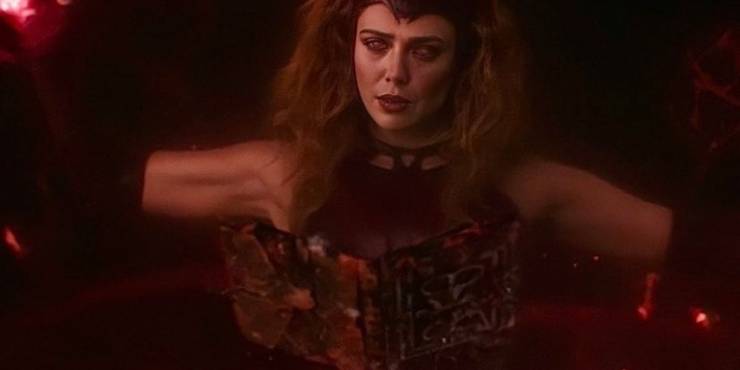
Given his key role at several points throughout the Marvel timeline, there are several ways in which Cagliostro could potentially impact the wider MCU. In fact, some of his influence may already be apparent at the start of Phase 4. For instance, at the end of WandaVision, Wanda Maximoff is seen studying a spellbook previously owned by Agatha Harkness as she appears to grow in power. Although it’s not clear whether this version of the Darkhold is the same one possessed by Cagliostro in the comics, it does directly link the character to the current MCU timeline.
Another potential link that could represent an exciting development for the MCU is Cagliostro’s connection with vampires. In the source material, the sorcerer has several battles against vampires as a result of his possession of the Darkhold – which they believe has the power to destroy their race. Given the prevalence of popular Marvel vampire characters, including the likes of Blade and Morbius (who will feature in an upcoming Sony film), Cagliostro could well feature in future vampire-heavy MCU movies.
A final possible association with the expanding MCU is the sorcerer’s link to the legendary supervillain Victor von Doom. In the source material, the Fantastic Four’s legendary nemesis time travels back to the year 1000 AD, where Cagliostro – then known as O-Bengh – teaches him the basic tenets of magic. Given Disney’s stated plans to incorporate the Fantastic Four into the MCU, Cagliostro could yet play a role thanks to his Doctor Doom connection. Although his appearance in What If…? is relatively short-lived, it’s clear that there are a number of ways that the character could influence the wider MCU.
- Shang-Chi and the Legend of the Ten Rings (2021)Release date: Sep 03, 2021
- Eternals (2021)Release date: Nov 05, 2021
- Doctor Strange in the Multiverse of Madness (2022)Release date: May 06, 2022
- Thor: Love and Thunder (2022)Release date: Jul 08, 2022
- Black Panther: Wakanda Forever/Black Panther 2 (2022)Release date: Nov 11, 2022
- The Marvels/Captain Marvel 2 (2023)Release date: Feb 17, 2023
- Ant-Man and the Wasp: Quantumania (2023)Release date: Jul 28, 2023
- Guardians of the Galaxy Vol. 3 (2023)Release date: May 05, 2023
About The Author











